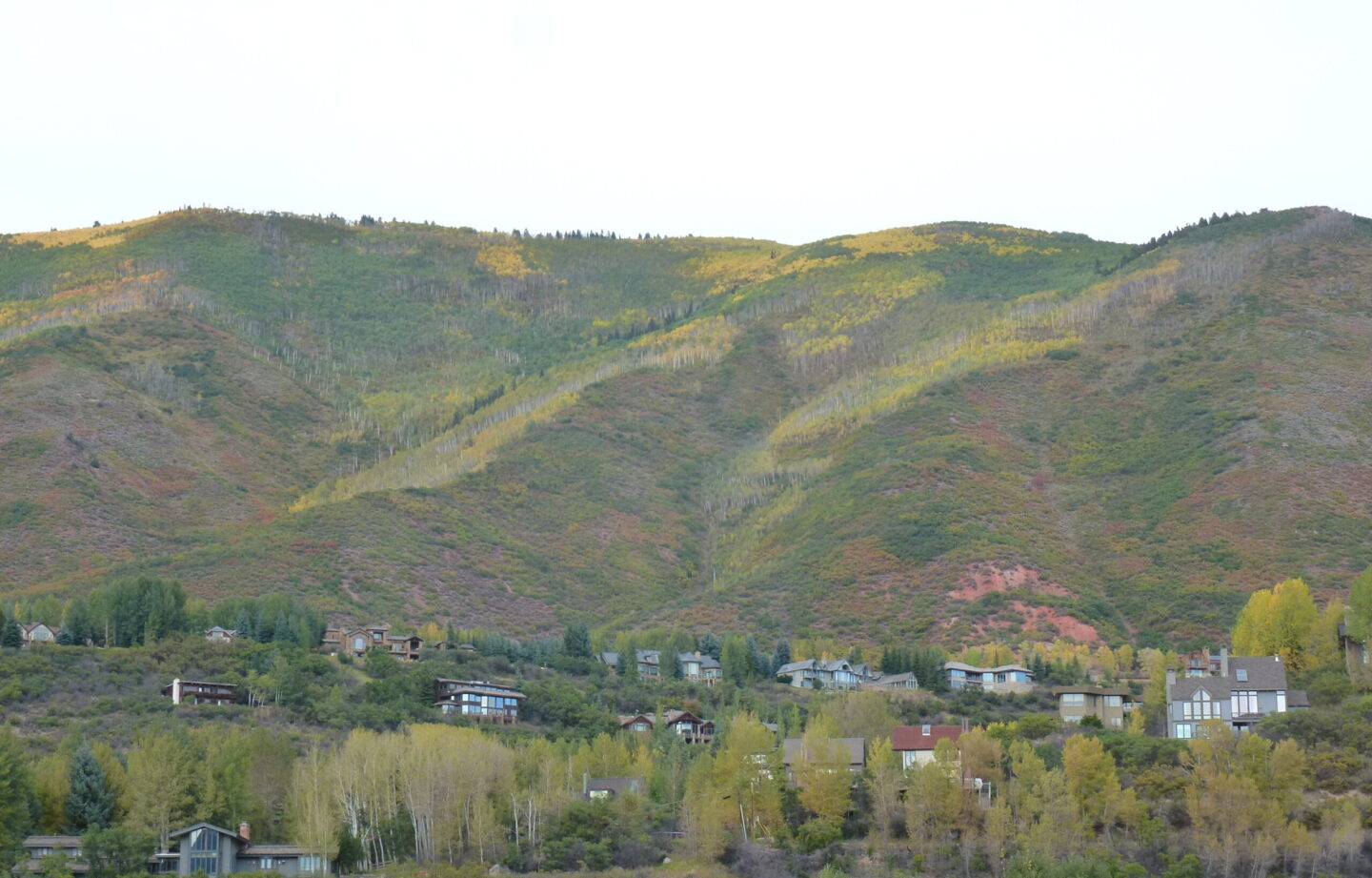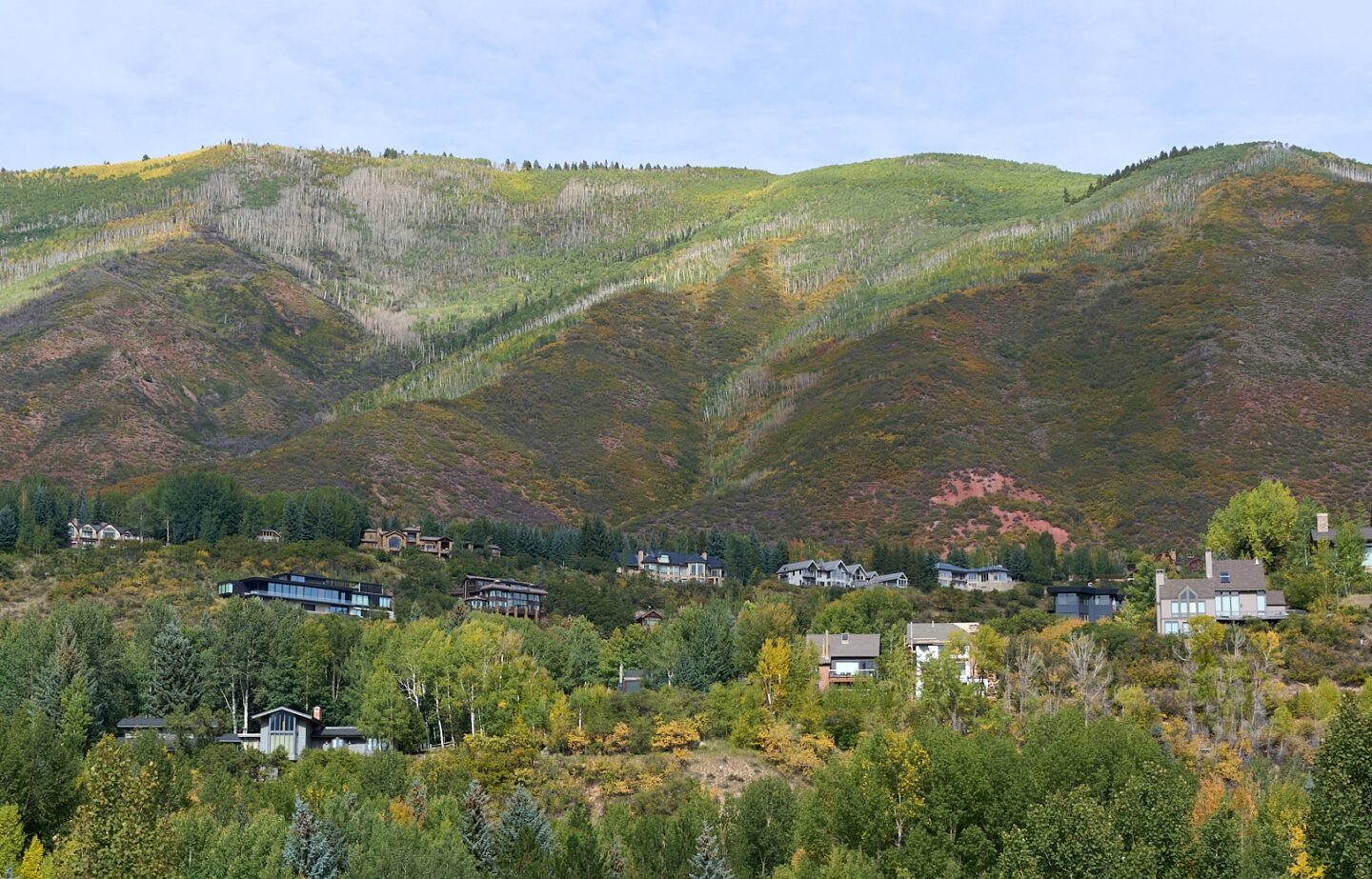Red Mountain, 9/21/2015. Jim Kravitz
RFV Phenology: Green is out, yellow is in! Or is it?


Red Mountain, 9/19/2015. Lydia Loof
After a dry summer, the weather pattern has changed and fall is here! Temperatures have cooled, leaves are beginning to change color, and we’ve even had some snow on the high peaks surrounding Aspen. Compared to last year, this fall feels much wetter and cooler (though maybe it just feels that way because of how dry the 2025 summer was). Looking at the numbers reveals that we’re about 0.09 inches above normal precipitation for September 1st to date, with a total of 0.94 inches. Last year it rained 1.0 inches in the month of September, which is about 0.75 inches lower than the 25 year average. With such a different weather pattern than last fall, I’ve been wondering what effect the dry 2025 summer and recent rain will have on fall colors.
While weather does play a role in leaf color change, the primary driver of the transition from summer to fall colors is photoperiod, or the amount and intensity of daylight. As the angle of the sun diminishes and days get shorter, leaves slow down photosynthesis. Their sugar production decreases, and eventually, the chloroplasts (the part of the cell responsible for photosynthesis) get broken down and pulled back into the trunk to be recycled. As a result, the leaf’s green pigment (chlorophyll) is also pulled out of the leaf, exposing the yellow and red pigments that we all love to see this time of year.
So what’s the deal with the weather? Temperature, precipitation, and soil moisture can all contribute to when leaves begin to change color and how vibrant their yellows and oranges are. Clear, sunny days (which it seems like we haven’t had many of) and cool nights result in sugars accumulating in leaves, turning them more orange or red. Dry conditions in spring and summer can delay the onset of fall changes and dull leaves. The same can happen if there is excess precipitation in the early fall, allowing leaves to continue photosynthesizing a little longer.
Check out the above photos of Red Mountain from 9/19/2025 and 9/21/2015. There are some clear differences, including visible burn areas from February’s Sunnyside prescribed burn, and other similarities, notably the yellow patch high up on the looker’s left. ACES has been documenting leaf color change on Red Mountain for over a decade, paying attention to differences in timing and color each year. Click here to see the same spot on September 25th of 2012 and 2013, and check back next year for another update.
As leaves around Aspen are just beginning to change, it’s hard to forecast this year’s leaf-peeping. Has it been too wet for a vibrant fall? Have nights been just cool enough to get bright oranges? Let us know what you are noticing!
Here are some other things to look out for as fall sets in:
- Migratory birds may make their way through the Colorado Rockies as they head south in upcoming weeks. Sandhill Cranes have been spotted around here in previous years, sometime between late September and mid-October.
- Our resident summer birds will begin their migration soon. Keep an eye out for final sightings of Great Blue Heron and Osprey at Hallam Lake.
- At Toklat, the fireweed is in its peak production of fluffy seeds.
- The first snow in town may be just around the corner! Do you have any predictions for when it will be?
Resources:
https://csfs.colostate.edu/forests-trees/aspen-fall-colors/
https://www.si.edu/stories/why-do-leaves-change-color-fall
https://www.canr.msu.edu/news/how_weather_affects_fall_colors
https://www.weather.gov/wrh/Climate?wfo=gjt
~ Lydia Loof, ACES Naturalist